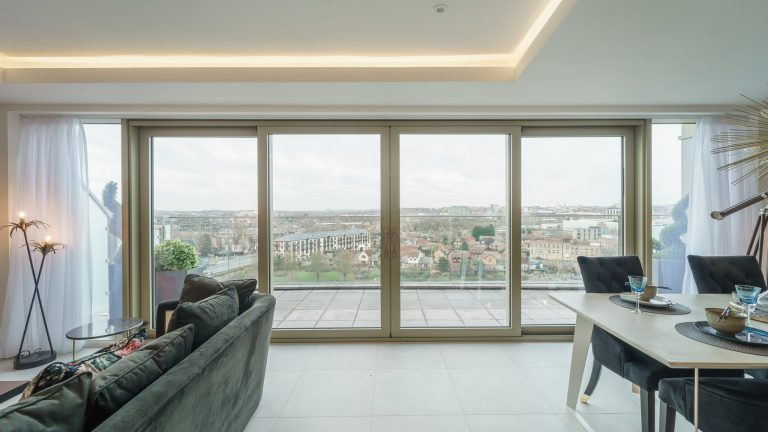A new pilot platform hosted by the air quality data platform OpenAQ, in partnership with the Environmental Defense Fund, creates the largest open-source repository of low-cost sensor data. Global air pollution data from OpenAQ shows 33 of the largest cities in the world are exceeding WHO guidance for PM2.5 air pollution by 4 times on average. 90% of the world suffer harmful pollution levels, yet only half have access to air quality data. Low-cost sensors help to fill key monitoring gaps and enable cities, governments, researchers, and citizens to participate in monitoring air quality and fighting air pollution in their communities. WASHINGTON, DC, LONDON > OpenAQ, a global nonprofit NGO aiming to build the world’s largest repository of air quality data, today announced a new pilot platform integrating low-cost sensors that will enable citizens to track air quality and fight air pollution in their local communities. New data shows global air pollution on the rise It is estimated that 90% of the world suffers from harmful levels of air pollution, with the problems particularly acute in urban areas in the Global South, affecting some of the least well-off communities. A recent investigation into the largest cities in the world showed that the average annual level of PM2.5 air pollution was 39 ug/m3, nearly 4 times higher than the World Health Organization guidelines (10 ug/m3). The worst affected cities were in Asia – Lahore (Pakistan), Delhi (India), Dhaka (Bangladesh), Ahmedabad (India) and Xi’an (China) having the highest levels measured, according to OpenAQ. The data illustrates the stark global inequalities of air pollution, which could be addressed by providing low-cost pollution sensors to communities across the world. For instance, the recorded PM2.5 levels in Delhi were 102 compared to just 7.7 in New York City. A coalition of NGOs are addressing air pollution inequality through a new open source data platform using low cost air sensors. Developed with the Environmental Defense Fund (EDF), the pilot is hosted on OpenAQ.org and provides a portal for research scientists, NGOs, and individuals to access both reference grade air quality data across the world as well as newer, low-cost sensor data. The platform brings together low-cost sensor air quality data from EDF’s Air Quality Data Commons as well as from Purple Air, HabitatMap and Carnegie Mellon University. The OpenAQ Platform already houses more than three quarter billion data points from 11,000+ stations in 99 countries. The new pilot provides a new dashboard for searching and understanding low-cost sensor data, as well as all the data previously available on OpenAQ’s website and platform via an API. The new OpenAQ platform will be a resource for cities, governments, and communities at a time when the effects of air pollution on public health, including the challenges they present in individuals diagnosed with COVID-19, have come into sharper focus. As nations around the world plan for a recovery from the pandemic that prioritizes climate change goals, tackling air pollution will become an important priority. OpenAQ’s data platform will give governments and communities an important tool to track these efforts and inform policies and programs. Over half of the world’s population has no access to official government data on air quality,[1] according to a study also published by OpenAQ[2] The study, entitled ‘Open Air Quality Data: The Global State of Play’ examined 212 countries and found 109 (51%) governments are not producing air quality data of any major pollutants, while 103 are. OpenAQ has published a full list of air quality monitoring by Governments. Low-cost sensors are a new air quality monitoring technology that complement more traditional and expensive reference grade monitors and help address these data gaps. While prices can vary, it is often in the 100s or 1,000s vs 10,000s of U.S. dollars for a reference grade monitor. Low-cost sensor units can be installed by individual users, communities as well as governments to increase coverage and access to air quality data to a greater number of citizens, policymakers and NGOs. Given their smaller size, they can be either mobile or in one place (stationary). Jeremy Taub, Executive Director of OpenAQ, said: “We want to encourage new, affordable solutions to monitor air quality, and bring that data to OpenAQ to increase funding and action for those communities who are most affected by air pollution. It will fill important data gaps allowing communities to develop solutions to air pollution.” Millie Chu Baird, Associate Vice President at Environmental Defense Fund, said: “One of the keys to fighting air pollution inequity is data transparency—ensuring that as wide a range of people as possible have access to as much of it as possible. It’s foundational to the ability to take action.” Michael Heimbinder, Executive Director of HabitatMap said: “HabitatMap makes technologies accessible so communities facing disproportionate environmental burdens can advocate for equity and improved quality of life. We’re excited to have the air quality data contributed to the open-source AirCasting platform made available via OpenAQ’s low-cost sensor pilot.” Albert Presto, Associate Research Professor at Carnegie Mellon University, said: “Sensors bring air pollution data to the neighborhood level, but people need to be able to access the data from trusted sources using reliable tools. OpenAQ is one source that will allow us to further disseminate this valuable data.” Ailun Yang, Head of International Climate and Environment Initiatives, Bloomberg Philanthropies, said: “Air pollution around the world threatens our climate and public health, including increasing peoples’ risk to COVID-19. Bloomberg Philanthropies is proud to support efforts like OpenAQ’s open-source air quality data platform, which increases transparency, expands access, and gives communities and governments the data they need to drive informed policy-based solutions to improve lives.” Matt Whitney, Portfolio Manager, Clean Air Fund, said: “We see the launch of OpenAQ’s low-cost sensor pilot as a critical step in enabling new solutions to fight for clean air. The Clean Air Fund believes that tackling air pollution requires open and transparent access to air quality data, adoption of new and emerging technologies, and creative multi-stakeholder and multi-sectoral partnerships. We are proud to support OpenAQ’s groundbreaking work in achieving these important goals.” Signe Ostby and Scott Cook, Valhalla Foundation, said: “We are proud to support EDF’s













